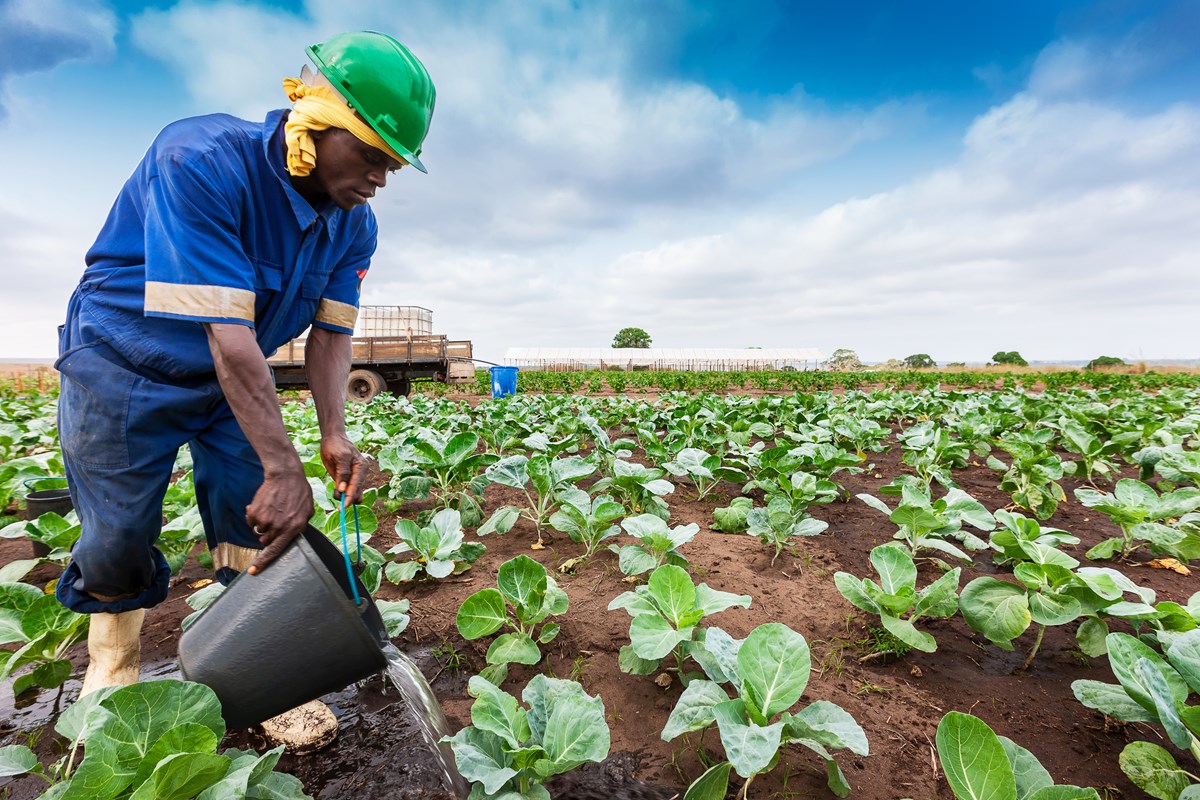It’s estimated that in 2021, approximately 490 million of Africa’s almost 1.4 billion people lived on less than $1.90 per day. To get a sense of African poverty, note that 9 of the 10 poorest countries are in sub-Saharan Africa. Many factors cause Africa’s underdevelopment, but contrary to what some may think, the continent’s economic prospects are far from hopeless. Indeed, even in the developed world, much can be done to help improve the lives of millions of the world’s poorest people. If we in the West are to help those that we proclaim to care about, one of the first policies to go should be price-distorting agricultural subsidies.
Western (and Chinese) subsidies are bad for many African farmers. Africa relies on commodity exports, and when developed states dole out gargantuan sums of money to domestic producers, global commodity prices fall. These subsidies not only waste an enormous amount of taxpayer money, but by artificially lowering commodity prices, subsidies distort the price mechanism and prevent African producers from earning the fair market price for their labor.
The case study of cotton subsidies impacting West African producers illustrates this phenomenon well.
The four West African countries that have a significant interest in the global cotton trade are Benin, Burkina Faso, Chad, and Mali. Together they are known as the Cotton-4. They are all on the United Nations’ Least Developed Countries list and collectively earn about 60 percent of their total crop revenue directly from cotton.
The Cotton-4 countries only produce about 3 percent of the world’s cotton. China and the United States combined produce over 40 percent, even though African farmers are often more efficient at producing cotton. Why do China and the United States produce so much more when their cotton farmers are comparatively inefficient? One reason is because the U.S. and Chinese governments funnel huge amounts of money toward cotton production, which distorts incentives and causes farmers to artificially increase supply.
Although the price-distorting effects of these subsidies have been known for decades, governments continue to enact policies that impoverish Africans. A 2007 Oxfam study reported that if the United States eliminated cotton subsidies, the global price of cotton would rise between 6 percent and 14 percent. This would lead to a significant increase in West Africa’s yearly revenue and could help lift thousands of Africans out of poverty. However, the United States went on to spend over $7 billion on cotton subsidies in the past decade and is projected to give domestic cotton farmers a further $700 million in aid this year.
Thankfully, the desire to reduce agricultural subsidies in the United States has become an increasingly popular and bipartisan issue. The libertarian Cato Institute, the conservative Heritage Foundation, and the liberal Brookings Institution have all called for agricultural subsidies to be reduced. Unfortunately, the largest price-distorter of all, China, shows no interest in changing its protectionist leanings.
The Chinese government has spent over $41 billion on cotton subsidies in the past decade and uses high tariffs to prevent African producers from being able to sell cotton in the lucrative Chinese market. Chinese subsidies have also been criticized due to evidence highlighting that the Chinese Communist Party uses cotton production to exert control over ethnic minorities.
More than 85 percent of Chinese cotton is produced in Xinjiang province, home to many of the nation’s Uyghur Muslims. The Xinjiang Production and Construction Corps, a Chinese-owned paramilitary organization, produces about 33 percent of all Chinese cotton. The $41 billion of Chinese cotton subsidies have not improved the lives of poor Chinese cotton farmers. Rather, these funds may have been used to build prison complexes and textile factories that are home to and staffed by the coerced Uyghur minority.
While cotton subsidies are a fine example of how U.S. and Chinese policies are hurting Africans, the impact of unfair agricultural policies on poorer Africans reaches far beyond the cotton sector.
Another example of subsidies hurting the incomes of the world’s poor can be seen in the European Commission’s recent attempt to protect the EU’s dairy farmers by purchasing 380,000 metric tons of skimmed milk powder. This decision created an enormous stockpile of milk that resulted in global milk prices plummeting. Unsurprisingly, African dairy producers took the brunt of this economic blow.
To get a sense of just how big a problem agricultural subsidies are, in 2016 the United States, the European Union, and China spent $33 billion, $100 billion, and $212 billion, respectively, on trade-distorting agricultural subsidies. African producers are being forced to compete on an uneven playing field, and unfortunately, they are losing.
While some may acknowledge the negative impacts that subsidies have on developing countries, many more attempt to defend the policy because they incorrectly believe that these funds are allocated to struggling farmers in developed countries. The case of U.S. subsidies illustrates how this belief is false. In 2016, the median household income for U.S. farmers was $76,000, which is 29 percent higher than the median income for all U.S. households. In addition, commercial family farms, which have a high median household income of $167,000, received 69 percent of commodity payments and 78 percent of insurance indemnities. These funds are not being allocated to farmers struggling to get by.
Removing subsidies is difficult because people assume that doing so will hurt agricultural workers. However, New Zealand’s experience in reducing aid to its agricultural sector demonstrates that countries need not fear the consequences of ridding themselves of wasteful protectionism.
Before the 1980s, New Zealand’s farmers enjoyed high levels of government support. Due to a budget crisis, the government removed agricultural protections in 1984, and farmers were forced to compete with global producers. Despite predictions that such action would end family farming and cause large numbers of farmers to move off their lands, just 1 percent of farmers were forced out of the market. Instead, New Zealand’s farmers adjusted and began to explore new markets. Productivity rose, market-distorting effects brought about by government funding went away, and today, New Zealand’s farming sector is dynamic and internationally competitive. The same story could happen in the United States, Europe, or anywhere else.
Free markets improve productivity and increase prosperity. On the other hand, as seen in New Zealand, subsidies distort prices, cause land to be allocated in ways that maximize an individual farmer’s ability to acquire government money—rather than in a way that makes land more productive—and hurt both domestic consumers and overseas producers.
Too many governments that lament living conditions in the developing world implement policies that keep people impoverished. Developed countries need to align their policies with their rhetoric and start helping African producers by removing subsidies and simply allowing the market to work. In doing so, their own economies will become more efficient, and millions of people across the world will be richer.
This Human Progress article was republished with permission.

